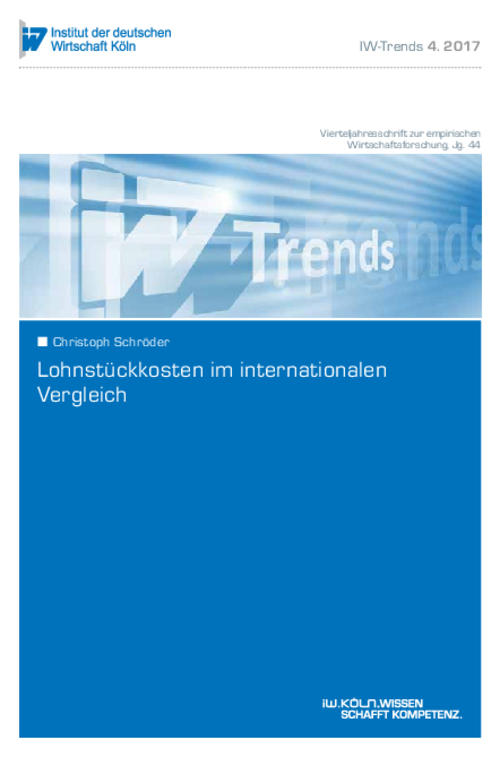In 2016 unit labour costs in German manufacturing continued high, with figures for the comparator countries averaging 12 per cent below the German level. At 6 percent, the Eurozone’s cost advantage over Germany was only half as high.

An International Comparison of Unit Labour Costs
IW-Trends

In 2016 unit labour costs in German manufacturing continued high, with figures for the comparator countries averaging 12 per cent below the German level. At 6 percent, the Eurozone’s cost advantage over Germany was only half as high.
Although productivity in Germany is above average, this fails to fully compensate for the drawback of high labour costs. Nor has Germany achieved any significant advantage in the way unit labour costs have developed. Compared to the competition, they have improved only marginally since the introduction of the euro. Germany is performing slightly better than the Eurozone as a whole: Between 1999 and 2016, German unit labour costs improved by 6.4 per cent. Nonetheless, the unit labour cost trend in five Eurozone countries was slightly or significantly more favourable than in Germany over the same period. However, when the euro was introduced, Germany’s economy was in poor shape. Compared with the other Eurozone countries its unit labour costs were the worst not only in the observation period, but also since German reunification in 1990. Between 1999 and 2007, Germany managed to improve its cost competitiveness significantly, thus correcting the preceding deterioration. Only in this phase did unit labour costs in domestic manufacturing develop more favourably than in other euro countries. Since 2011, however, they have risen more steeply in local currency terms than for the competition as a whole and also mor e than in the Eurozone.

Christoph Schröder: Lohnstückkosten im internationalen Vergleich
IW-Trends

More on the topic

The 9th IW Survey of Further Training
In 2016 some 85 per cent of companies in Germany were active in continuing vocational training, using a broad mix of methods.
IW
Has the German Economy Reached its Limit?: Skilled Labour Shortages as a Brake on Growth
The German economy is performing significantly better than was expected in the first few months of this year. During the course of 2017, certain early fears – especially of a weakening of the global economy due to increasing protectionism – have proved ...
IW